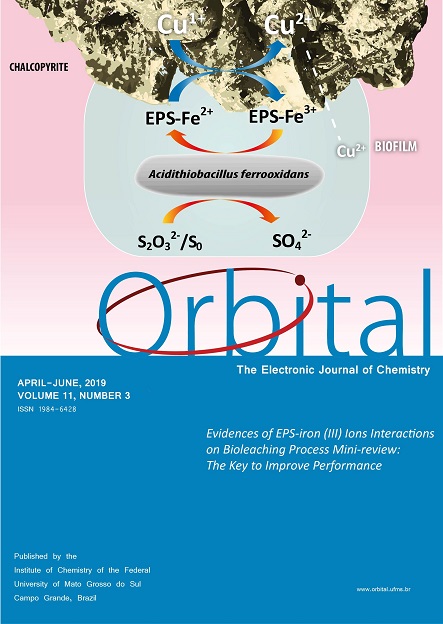- γ-Fe2O3 nanoparticles,
- hydroxyurea,
- density functional theory,
- noncovalent and covalent functionalization,
- mechanism
Copyright (c) 2019 Orbital: The Electronic Journal of Chemistry

This work is licensed under a Creative Commons Attribution-NonCommercial-NoDerivatives 4.0 International License.
Abstract
In this study, the noncovalent interactions and four mechanisms of covalent functionalization of hydroxyurea have been examined using the density functional theory. Quantum molecular descriptors were also studied in noncovalent interactions. Hydroxyurea is an anticancer drug that, when loaded onto the γ-Fe2O3 nanoparticles, will have additional properties and efficacy in the medical applications. The Lumo-Homo energy gap of hydroxyurea is greater than that of noncovalent configurations, indicating the high reactivity of hydroxyurea. Hydroxyurea can bond to the γ-Fe2O3 nanoparticles through various functional groups such as the CO (k1 mechanism), the NH2 (k2 mechanism), the OH (k3 mechanism) and the NH (k4 mechanism). These reactions were considered to calculate the activation energies, the activation enthalpies and the activation Gibbs free energies. Using these calculations, the product of k4 mechanism was found to be a thermodynamic and kinetic product. These results can be applied to other similar medications.


